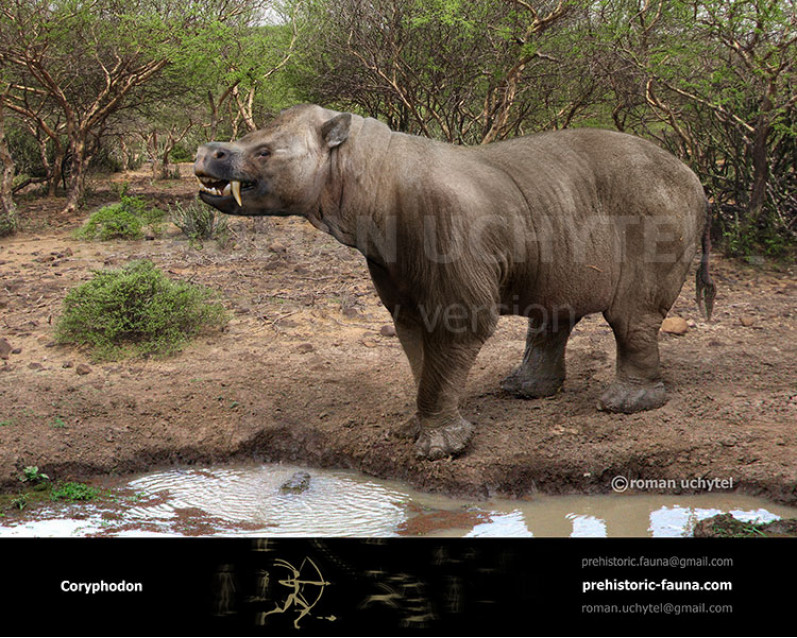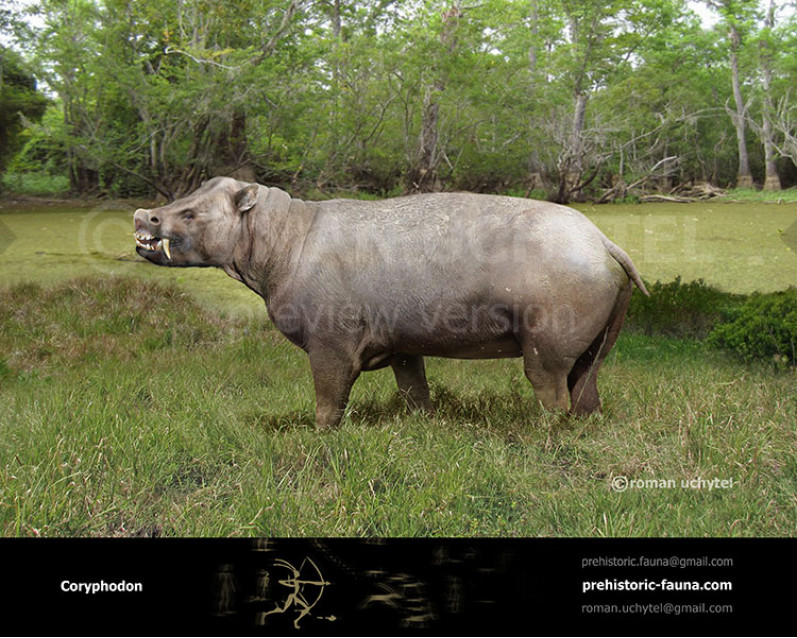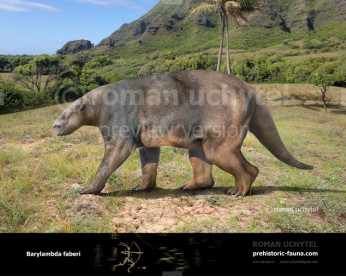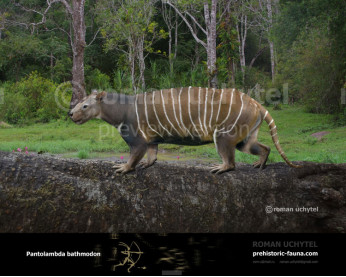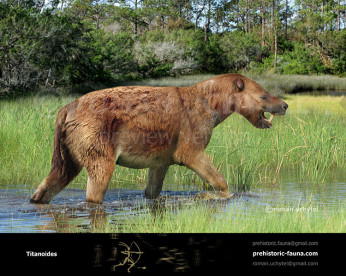Coryphodon
9090Coryphodon (Coryphodon Owen, 1845)
Order: †Cimolesta
Suborder: †Pantodonta
Family: †Coryphodontidae
Dimensions: 2,7 m in length, 125 cm in height, 500 kg of weight
Expansion: Eocene (North America)
A typical representative: Barylambda faberi
Coryphodons – species of Amblypoda, widespread in the lower Eocene, at the end of which they became extinct. Genus Coryphodon developed in Asia in the early Eocene epoch and then migrated to the territory of modern North America where it probably forced out the native pantodonte Barylambda (Barylambda faberi).
Coryphodon’s hight was about one meter, and its weight about 500 kg. They were solid, strong built animals with mighty neck musculature. Both sexes had large canines of which the top ones were hypertrophied. Male species’ canines were larger, which was characteristic for pantodontes. The scull had explicit sagittal crest to which mighty temporal muscles were attached. Coryphondon’s limbs were rather strong, but short. Each of the limbs had five fingers. Finger phalanxes ended in small hooves. Coryphondon’s brain was one of the relatively smallest among known mammals; their brain mass was only about 90 g. Judging by how their bodies were built, they were quite sluggish and clumsy animals. Probably, they preferred living in forests or close to water. Their diet consisted of leaves, young sprouts, flowers and various swamp vegetation.
Amblypodas as animals with very small brain and rather imperfectly built teeth and limbs could not coexist for a long time with new, more progressive Ungulata that shortly took their place.
Coryphodon (Coryphodon Owen, 1845)
Order: †Cimolesta
Suborder: †Pantodonta
Family: †Coryphodontidae
Dimensions: 2,7 m in length, 125 cm in height, 500 kg of weight
Expansion: Eocene (North America)
A typical representative: Barylambda faberi
Coryphodons – species of Amblypoda, widespread in the lower Eocene, at the end of which they became extinct. Genus Coryphodon developed in Asia in the early Eocene epoch and then migrated to the territory of modern North America where it probably forced out the native pantodonte Barylambda (Barylambda faberi).
Coryphodon’s hight was about one meter, and its weight about 500 kg. They were solid, strong built animals with mighty neck musculature. Both sexes had large canines of which the top ones were hypertrophied. Male species’ canines were larger, which was characteristic for pantodontes. The scull had explicit sagittal crest to which mighty temporal muscles were attached. Coryphondon’s limbs were rather strong, but short. Each of the limbs had five fingers. Finger phalanxes ended in small hooves. Coryphondon’s brain was one of the relatively smallest among known mammals; their brain mass was only about 90 g. Judging by how their bodies were built, they were quite sluggish and clumsy animals. Probably, they preferred living in forests or close to water. Their diet consisted of leaves, young sprouts, flowers and various swamp vegetation.
Amblypodas as animals with very small brain and rather imperfectly built teeth and limbs could not coexist for a long time with new, more progressive Ungulata that shortly took their place.

